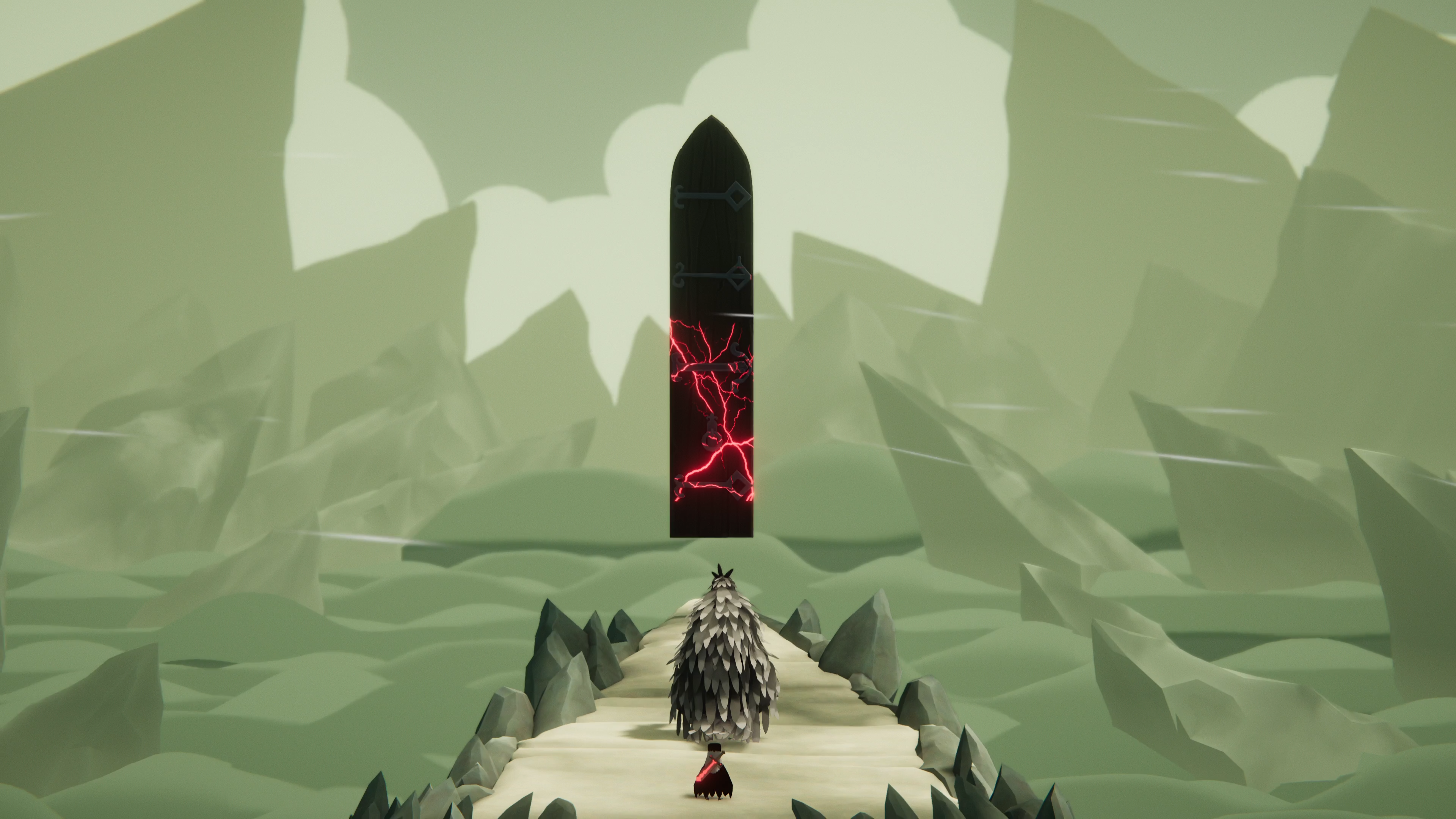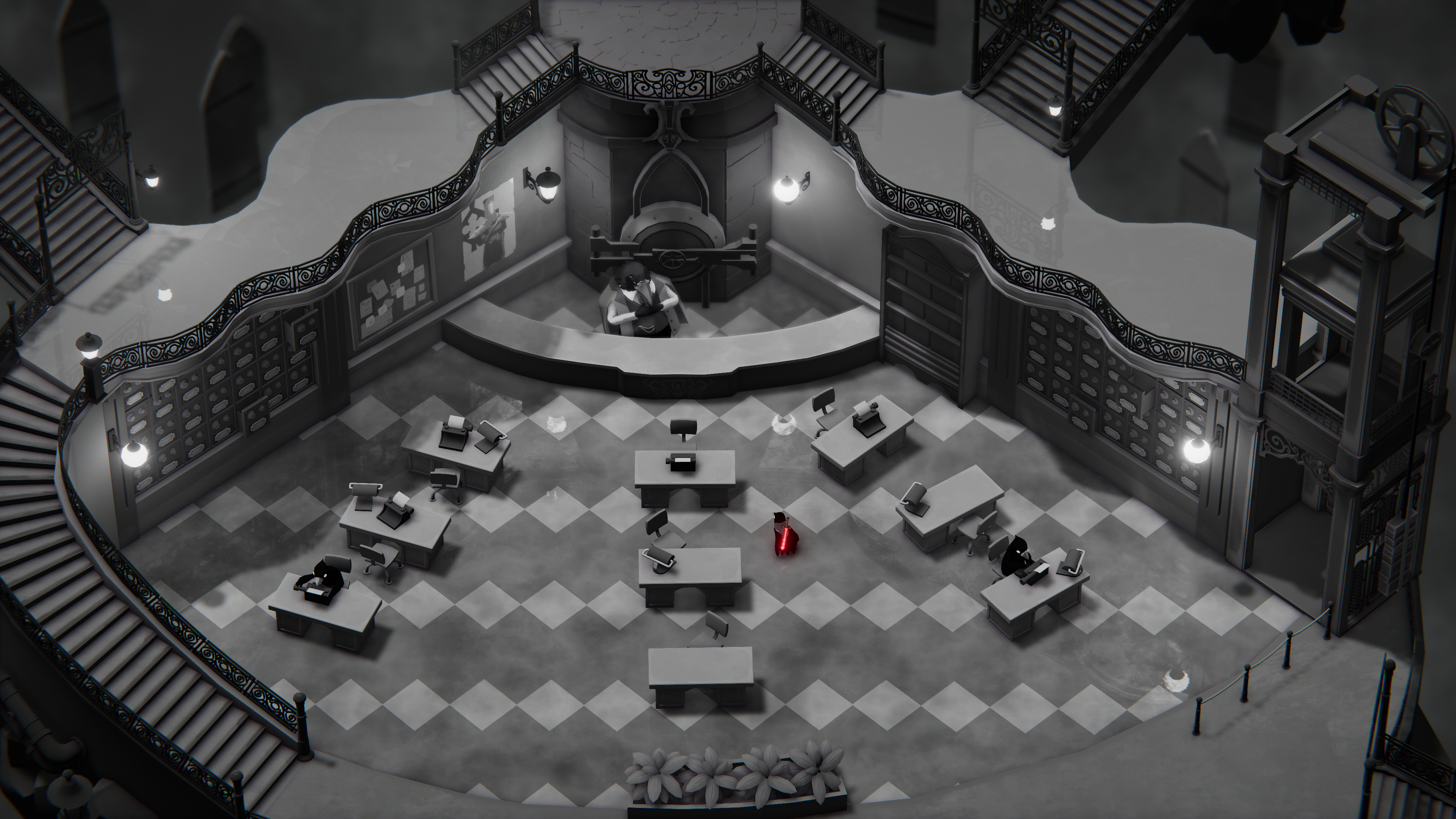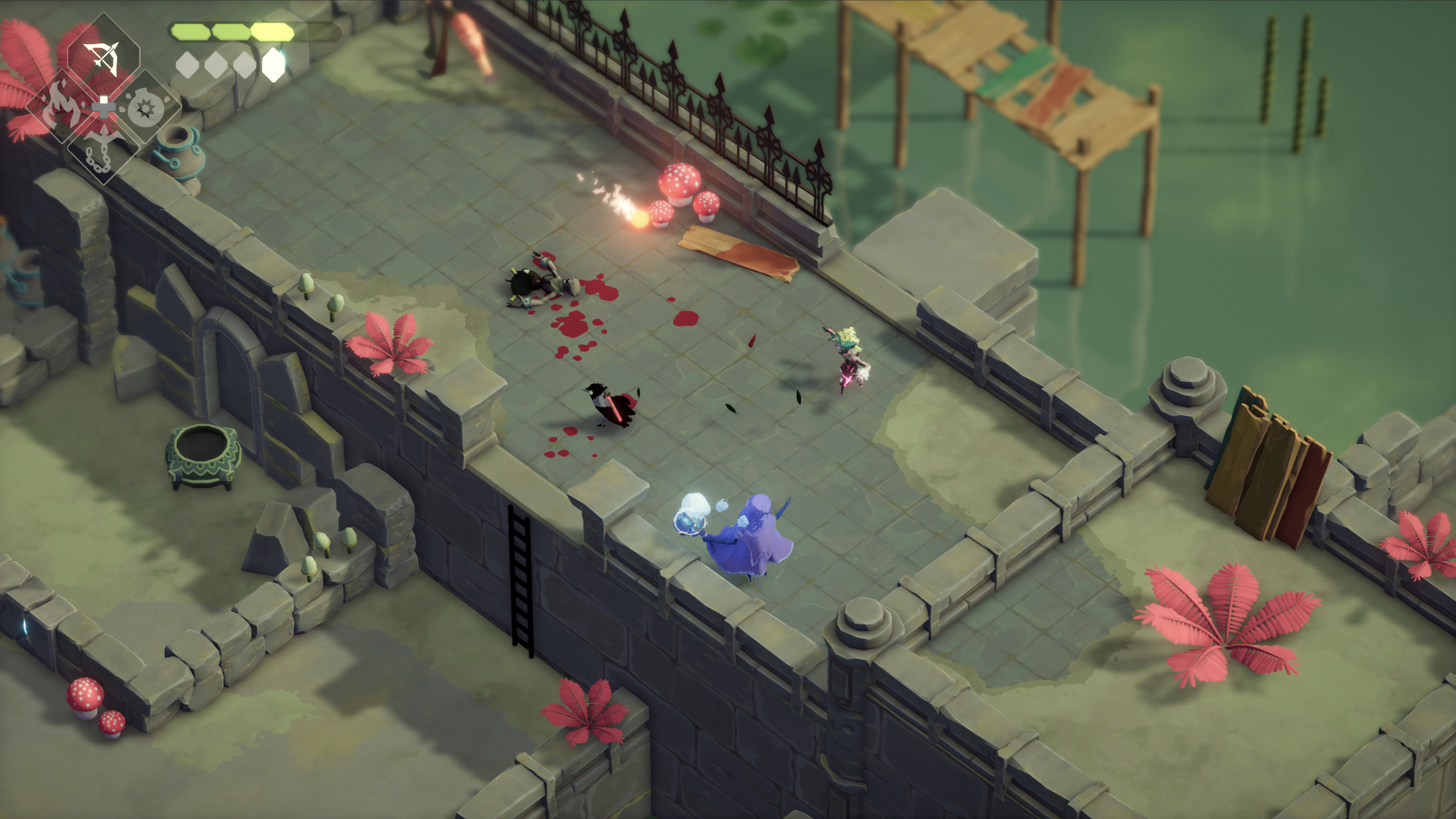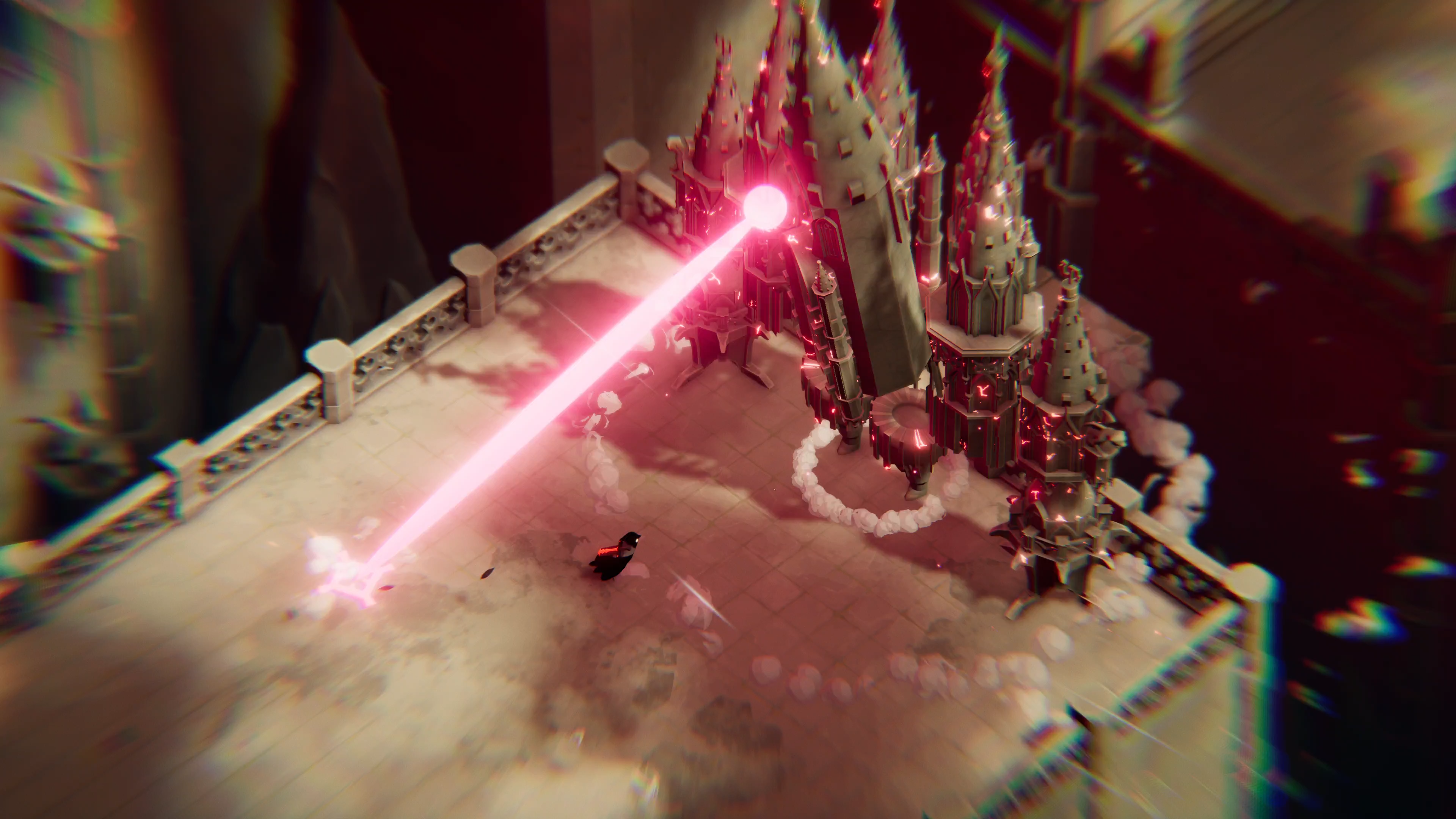‘Death’s Door’ Review: The Bird Reaper

Reaping souls is honest work, but things quickly get more complicated in Death’s Door.
Earlier this week, I reviewed Boomerang X, one of publisher Devolver Digital’s latest hits. It was great stuff, and I mentioned more crazy stuff was coming from them. I’ve also had the chance to play Death’s Door over the past few days, and this one should be right up many folks’ alleys.
The game has been developed by Acid Nerve, whom some of you might know because of Titan Souls, a 2015-released “boss rush” kind of game that originated in a speedy game jam. The final release found great success, but I kind of hated it — the one-hit kills and clunky bow-based combat quickly wore my patience thin, and I found the backtracking to be atrocious. But whatever, it was a jam-born game. What could these guys do with more time and experience?

Death’s Door hits the ground running and doesn’t spend much time introducing you to its world or characters. Things are simple enough: you play as a crow that works for an organization which exists outside the world of the living and takes care of reaping souls. It’s just another day at the job. Before you even get used to the controls, you’re facing a Legend of Zelda-inspired boss and claiming your first victory… or not. The crow is knocked out by a mysterious thief, and the precious soul is taken away. Returning with your hands empty isn’t an option, and so the adventure begins.
This is no roguelite, in case you were wondering. It does draw heavily from Souls-like games though (especially from the first Dark Souls), and the devs at Acid Nerve clearly love the classic Zelda titles. And it’s a lovely combination, as Death’s Door has a clearly defined soul, lots of personality, and plenty of tricks up its feathered sleeve. It’s not unbearably hard either; some arenas and boss fights are challenging, but I never felt my demises were unfair or that I was relying on luck — enemy patterns can be learned, and the game constantly rewards patience and mixing up your choice of tools and weapons.

While the sword you start with is perfectly fine for the task at hand, since global stats can be improved with souls, alternative weapons are unlocked by walking off the marked trail and can offer nice alternatives which make the fights flow differently. On the other hand, the four “magic” tools cannot be ignored and come into play as you progress through the story. In typical Zelda and Dark Souls fashion, optional areas and hidden paths become accessible thanks to newfound spells and items. There’s plenty to do outside the main adventure, but the world in Death’s Door never feels daunting. And the same goes for the main quest, which doesn’t overstay its welcome and rolls the credits before it runs out of narrative fuel. Look out for the secret true ending too!
Enemy variety also stays consistent throughout the whole adventure — some foes are limited to specific regions/areas, but most of them pop up frequently, making some arenas trickier than others. For example, dealing with wizards and armored knights isn’t too bad, but things get complicated if the boomerang-wielding beasts introduced in the swamp biome join the party… Again, learning how enemies behave is of key importance to come out on top. Not much room for senseless carnage here. The major boss fights (most of which are memorable) double down on this philosophy, too.
Dying sends you back to the nearest door, one of the many pathways used by the crows to quickly move around. These are scarce and usually found at the beginning of an area, but maps are filled with shortcuts (ladders, elevators, you know) that make journeying easier. Acid Nerve made sure annoying backtracking wasn’t a problem this time around, and they went full Dark Souls on the level design. I chuckled more than once at some extremely explicit nods and homages. In the same way, bonfires which restore lost health are also a thing in Death’s Door, except they’re plant pots that you can permanently “power up” with seeds which are found lying around (and often hidden). Even though the seeds make life a lot easier, maybe they’re a bit too abundant? I was never low on stock, as I felt some pots weren’t necessary, and came across plenty of seeds without really looking for them.

In spite of Death’s Door putting most of its cards on the table within the first 30 minutes or so, the experience never stagnates — each major area is full of unique character and new gameplay mechanics. The overall structure might be predictable due to the plot (which I won’t spoil here), but neither the pacing nor the intricacies of the different zones are alike. On top of that, the cast of characters is surprisingly colorful and funny for a game that focuses on the inherent sadness to death and departing the world of the living. It’s not just a good-looking (and sounding) adventure, but a well-told one as well. Furthermore, its final strides are surprising and kick up the stakes in a big way.
Death’s Door is a delight to play, look at, and listen to (what an amazing soundtrack). It’s also a massive level-up for Acid Nerve, who are now playing in the big indie leagues. Where many titles failed by sticking too close to traditional roots and/or nostalgia, these developers breathed new life into a subgenre that has been done to death (pun intended). If you’re okay with getting your butt kicked on a regular basis, your time (and money) will be well spent with this beauty. Moreover, I think it’s a great entry point into Souls-like games. This bird-starring quest is tough, but not actively hostile.
The game is now available on PC (via Steam, Epic, and GOG) and Xbox systems. Release plans for other platforms remain unclear, but it’s a good fit for all platforms IMO. The price is currently sitting at $19.99, with an artbook and the 50-track soundtrack by composer David Fenn being offered as extras in the Deluxe Edition of the game.
Thanks to Devolver Digital (publisher) and Tinsley PR for the review code.
Francisco J. Ruiz is that guy who has watched Jurassic Park a thousand times and loves Star Wars. His hunger for movies is only matched by his love for video games. He graduated in English Studies from the University of Malaga, in Spain. As he keeps writing about what he enjoys (and doesn’t) for websites all over, he’s continuing his studies.






